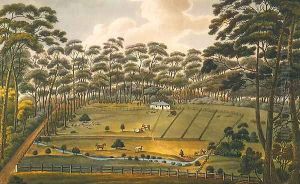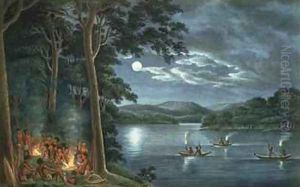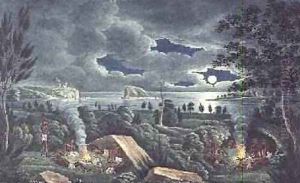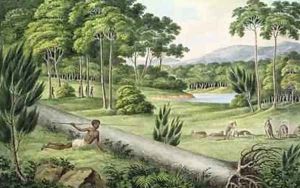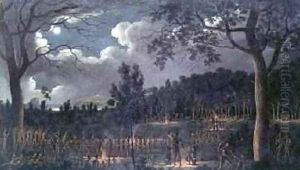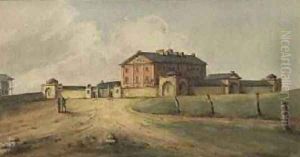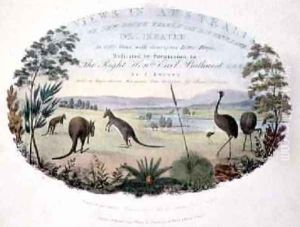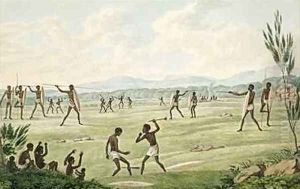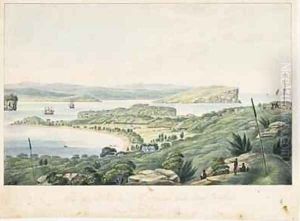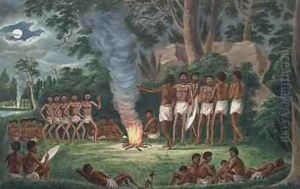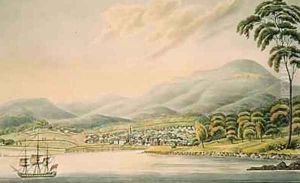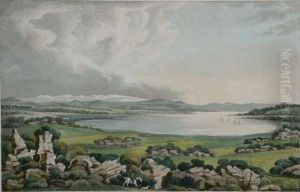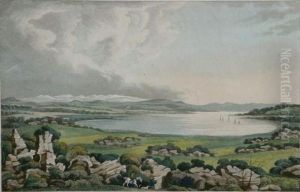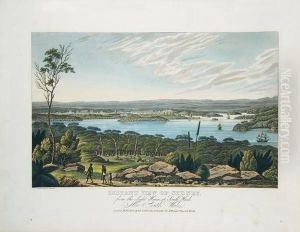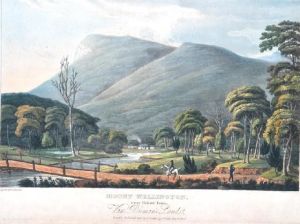Joseph Lycett Paintings
Joseph Lycett was an English-born artist known for his detailed paintings and prints of Australian landscapes, flora, and fauna, as well as scenes of colonial life in the early 19th century. Born in Staffordshire, England, in 1775, not much is known about his early life before he was convicted of forgery in 1811. His conviction led to his transportation to Australia in 1814, arriving in New South Wales as a convict.
In Australia, Lycett's skills as an artist were quickly recognized, and he was soon assigned to work under the direction of Dr. William Redfern, an emancipated convict and the colonial surgeon in New South Wales. It was during this time that Lycett began producing watercolors and drawings that captured the burgeoning settlements, indigenous peoples, and the natural environment of the colony. His works during this period were primarily used for scientific and promotional purposes, showcasing the potential of the colony to those in Britain.
Lycett's talent afforded him certain privileges, and by 1819, he had been granted a conditional pardon. He continued to work and live in New South Wales, producing a significant volume of work. Among his most notable contributions are the views he painted of Sydney, Newcastle, and other parts of New South Wales, which were later compiled into the publication 'Views in Australia or New South Wales & Van Diemen’s Land Delineated', published in London between 1824 and 1825. This collection was instrumental in shaping European perceptions of Australia.
Despite his success, Lycett struggled with personal issues, including a relapse into forgery, which eventually led to his return to England around 1822. Little is recorded about his final years, and he passed away in 1828. Today, Joseph Lycett is remembered for his contribution to early Australian art, particularly his panoramic landscapes and detailed depictions of the early colonial era, which provide invaluable insights into the history and development of Australia during that period.
